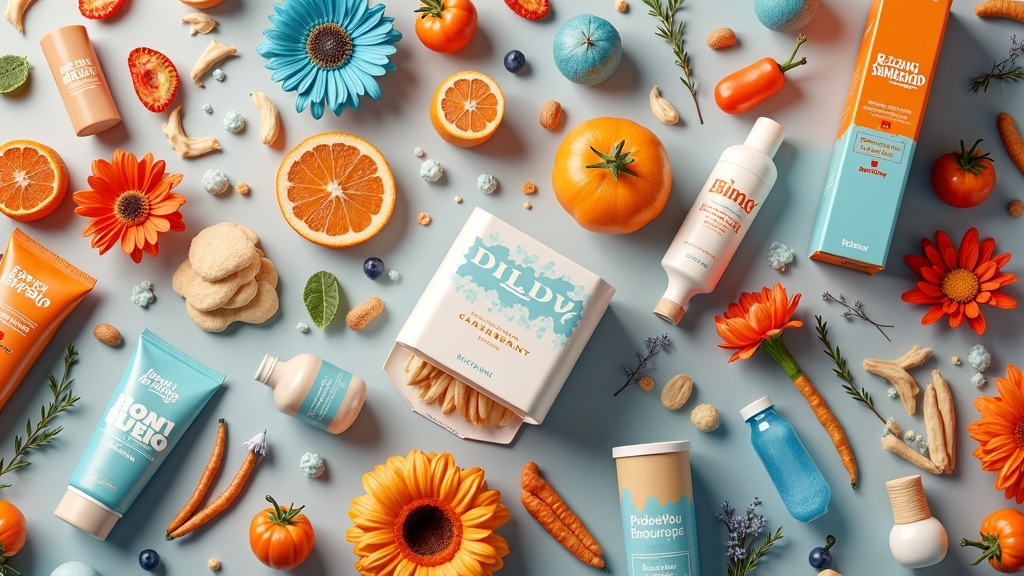Standing out in a niche market isn’t always easy, especially when you’re up against established brands or other passionate small businesses. But building a real name for yourself is absolutely doable with the right strategies. I’ve seen firsthand how thoughtful positioning, and just a bit of creativity, helps set even the smallest brands apart. Here I’m breaking down some proven strategies to help you carve out your own space in your niche market.

Why Standing Out in Your Niche Matters
Niche markets are getting busier, with more businesses popping up to fill very specific needs. While more interest can mean more opportunity, it also means customers have a lot of choices. Finding ways to separate your brand from the others is really important if you want to get noticed, build loyalty, and keep people coming back.
For example, if you sell ecofriendly pet toys, you’re not just competing with big-box pet stores, but also with lots of small businesses focusing specifically on sustainable pet products. Shoppers notice what makes you different. Whether that’s your story, your designs, or your customer service.
Niche success is about going deeper rather than broader. You don’t need everyone to notice you, just the right people who genuinely care about what you offer.
Get Clear on Your Unique Value Proposition (UVP)
The first move I always recommend is figuring out what truly sets you apart. Your Unique Value Proposition (UVP) sums up what makes your brand or offering special and why someone should choose you over everyone else.
Ask these questions when figuring out your UVP:
- What problems do I solve that others overlook? Think about the little details only you focus on. Maybe your ingredients are sourced more ethically, or your tech is simpler and easier for newbies.
- Why do my regular customers keep coming back? Their reviews and messages often reveal the edge you have over other brands.
- What one word comes up every time people describe my business? If everyone says your service is “friendly” or your packaging is “beautiful,” lean into that.
A clear UVP helps guide your branding, website language, social posts, and even product development. Keep it simple and real. Something you’d feel proud to say about your business in person.
Leverage Storytelling and Authentic Branding
People love supporting businesses with a face, a story, or a mission they find relatable. Sharing honest stories makes you memorable and helps you connect with customers on a real level.
Here are some ways to share your story with your audience:
- Showcase your ride: Talk about where you started, the challenges you faced, and what motivates you. A raw before-and-after of your work space or old prototypes works wonders.
- Be open about your values: If you use special ingredients, support a cause, or have a “why” behind what you do, share it in your bio, product pages, and social media.
- Use authentic visuals: Use photography that feels real to your brand, rather than just polished stock images. Behind the scenes shots or user generated content show you’re the real deal.
Authentic branding isn’t about having the flashiest logo. It’s about consistency, honesty, and sharing what makes you tick as a business.
Focus On Customer Experience
In niche markets, word spreads fast. An awesome customer experience will make people rave about your brand, while a poor experience can chase folks away. I’ve seen small brands boost their reputations just by being super responsive, going the extra mile, or sending a handwritten thank-you note.
Consider these simple customer experience tactics:
- Fast, friendly communication: Quick replies to emails and DMs build trust. Even just a “Got your message, working on it!” can make a huge difference.
- Personal touches: Little extras, like free samples or thank you cards, help customers feel valued.
- Easy returns and clear policies: When buyers know what to expect, it lowers their risk and builds confidence in your business.
Simple changes, like asking for post-purchase feedback or remembering repeat buyers’ preferences, can make your service shine. Over time, happy customers will both return and recommend you, which naturally grows your standing in the community.
Build a Tight Knit Community
Community building is a powerful way to stand out. It’s not only about reaching customers. It’s about connecting them to each other and to your brand values. When people feel part of something exclusive, they’re a lot more likely to spread the word.
Ways I’ve seen brands make this work:
- Exclusive groups: Private Facebook groups, Discord channels, or even an email “insider” list gives your customers a place to share, ask questions, and connect.
- User generated content: Encourage your buyers to share their experiences on social, and reshare their content. It’s free marketing and builds a sense of belonging.
- Loyalty programs: Offer special deals or early product access to repeat customers. Even a simple referral program makes people feel appreciated.
Community can even bring valuable feedback for future ideas—the more you interact and listen, the more in-tune your brand becomes with real customer desires.
Offer Something Limited or Custom
Niche customers love things they can’t find elsewhere, especially if it feels made just for them. Limited time or customizable products can draw repeat buyers and buzz from new customers. Even small changes, like color options or engraved names, go a long way.
Examples of limited or custom strategies include:
- Exclusive collections: Drop a seasonal line, a one time collab, or a “members only” product to create urgency and FOMO.
- Personalization: Allow buyers to customize something about the item, such as color, name, or even a thank you note.
- Beta tests or soft launches: Roll out new products in small batches to your core customers before everyone else.
Offering unique options makes your products feel even more valuable and memorable, and often results in much higher engagement and word of mouth within your niche.
Stay Visible, Consistently
Standing out isn’t about being flashy once and then disappearing. Consistency matters. Keeping your business visible means showing up regularly in the places your buyers already spend time, whether that’s Instagram, YouTube, Pinterest, or your own email list.
Fresh content and regular interaction can help you build a loyal following. A few ideas:
- Share progress and updates: Give your community sneak peeks of product development, ideas you’re testing, or even lessons you’ve learned.
- Host mini events: Small virtual meetups, Q&As, or live launches create excitement and give reasons for people to show up.
- Team up with others: Work with noncompeting brands or content creators in your niche for cross promos, interviews, or giveaways to reach new audiences.
Try scheduling regular updates on your main platform so your audience always knows when to expect something new. Consistency not only increases your reach, but it cements your brand as part of their regular routine.
Things To Watch Out For In a Crowded Niche
Even the best strategies can get tripped up if you don’t watch out for common roadblocks in niche markets. Here are some things I always recommend keeping in mind:
- Overpromising: Only promise what you can deliver. Distrust spreads fast in small communities.
- Copying other brands: While it’s great to draw inspiration, customers catch on when brands closely mirror someone else’s style or messaging. Stay true to your own voice and offering.
- Lack of research: Spending time to really know your niche audience helps you serve them better than anyone else. Read what’s trending, join groups, and keep an eye on feedback.
- Pricing wars: Competing only on price can turn a unique offering into a generic one. Try adding value instead of slashing prices.
Overpromising and Customer Trust
Trust is everything. Being transparent about what your product or service does, and what it doesn’t, keeps buyers loyal even if hiccups happen along the way.
Copying vs. Inspiration
It’s easy to think “If it works for them, maybe it’ll work for me,” but just copying someone else blends your voice into the background. Being inspired by others is totally normal, but combining those ideas with your own style or story really gets you noticed.
Advanced Tactics for Extra Visibility
Once you’ve tackled the basics, a few additional moves can give you an extra boost in a niche market:
- Survey your customers: Quick polls or post purchase surveys reveal what matters to your audience and give you inspiration for new products or tweaks.
- SEO for your niche: Building content around highly specific keywords can help folks find you through Google searches. Focus blog posts, landing pages, and product listings on particular problems or questions your buyers have.
- Build media relationships: Reach out to bloggers, podcasters, or small magazines in your field. A thoughtful pitch can lead to features, backlinks, or interviews that boost your credibility.
Trying out these advanced strategies can separate you from competitors and put you on the radar of people actively searching for your niche solution.
Frequently Asked Questions
Here are some questions folks in niche markets ask all the time:
Question: How do I know if my niche is too small?
Answer: Small is good if there’s a devoted group of people willing to spend on what you offer. Gauge demand by searching for forums, groups, or social pages about your topic, and see what people are already buying.
Question: Can I switch my position in the market if I find another angle?
Answer: Absolutely. Mixing up branding or focusing on a new product can energize your audience. Listen to feedback and try new things if something isn’t working.
Question: What’s the best way to use social media to stand out?
Answer: Show your behind the scenes process, get real in your captions, and interact with your audience like you’re talking to friends. Social platforms love authenticity and regular updates.
Final Thoughts
Making your mark in a niche market takes more than just a unique product or service. It’s also about sharing your story, focusing on your community, and offering experiences customers remember. Consistency, creativity, and customer care go a long way. The best time to try out new ideas is now. Step out with your own voice and see just how much impact you can have in your niche.
